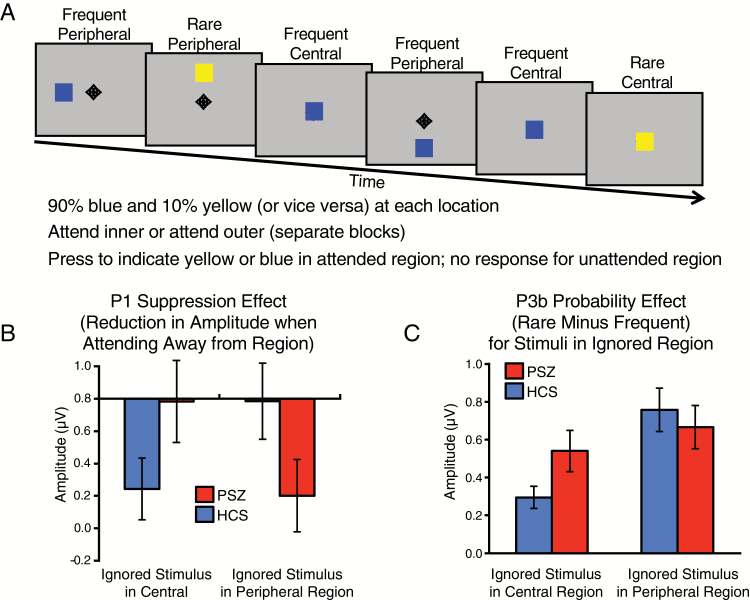Fig 2.
(A) Double oddball paradigm.10 (B) Suppression of sensory-evoked P1 when attention was directed away from a given location. A larger bar indicates greater suppression (smaller P1 amplitude). (C) P3b probability effect (rare minus frequent) for stimuli in the ignored region, which indicates the amount of cognitive processing resources devoted to irrelevant stimuli. Here, a larger bar reflects a failure to suppress processing in the to-be-ignored region.

